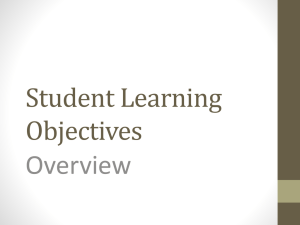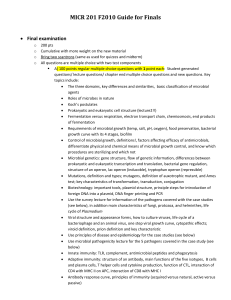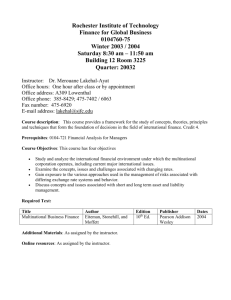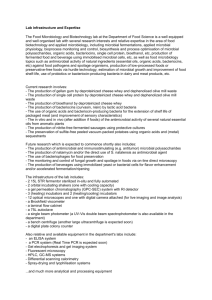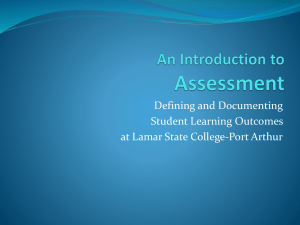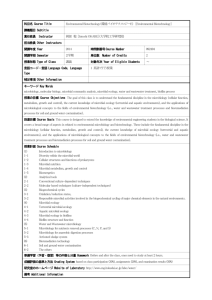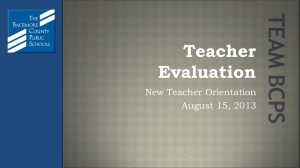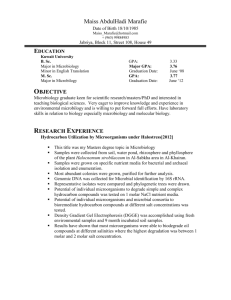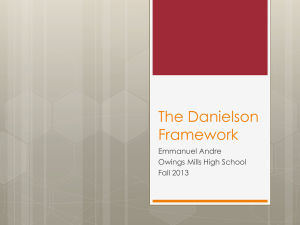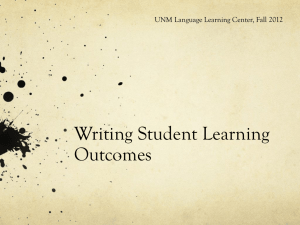Spring 2013 SLO assessment (4)
advertisement
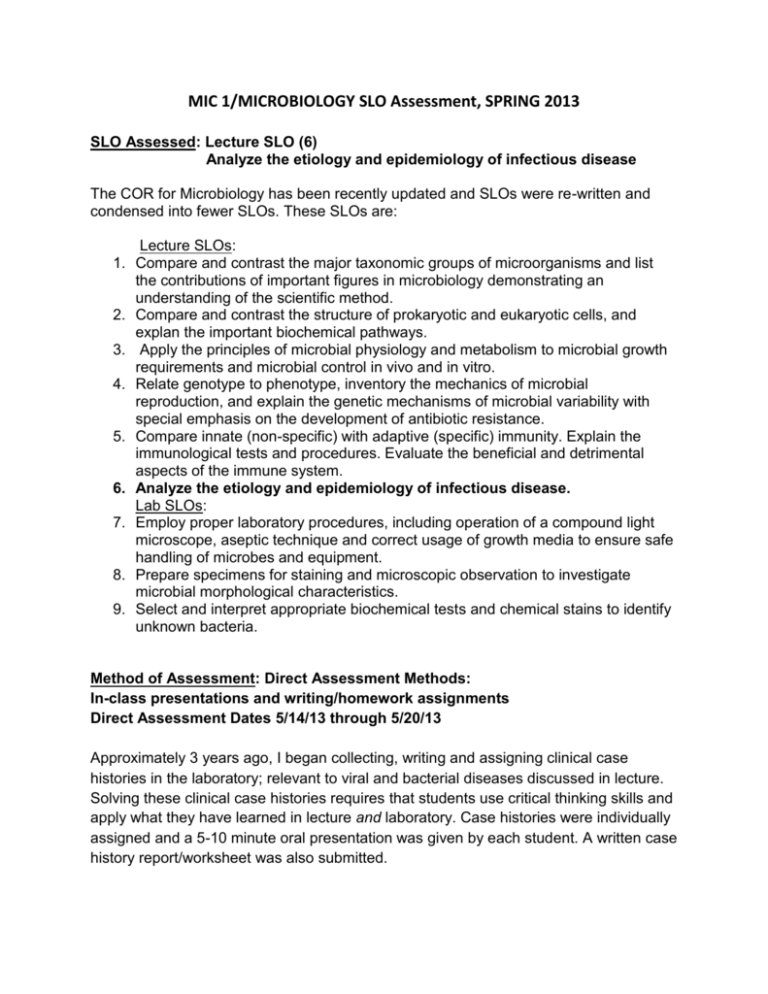
MIC 1/MICROBIOLOGY SLO Assessment, SPRING 2013 SLO Assessed: Lecture SLO (6) Analyze the etiology and epidemiology of infectious disease The COR for Microbiology has been recently updated and SLOs were re-written and condensed into fewer SLOs. These SLOs are: Lecture SLOs: 1. Compare and contrast the major taxonomic groups of microorganisms and list the contributions of important figures in microbiology demonstrating an understanding of the scientific method. 2. Compare and contrast the structure of prokaryotic and eukaryotic cells, and explan the important biochemical pathways. 3. Apply the principles of microbial physiology and metabolism to microbial growth requirements and microbial control in vivo and in vitro. 4. Relate genotype to phenotype, inventory the mechanics of microbial reproduction, and explain the genetic mechanisms of microbial variability with special emphasis on the development of antibiotic resistance. 5. Compare innate (non-specific) with adaptive (specific) immunity. Explain the immunological tests and procedures. Evaluate the beneficial and detrimental aspects of the immune system. 6. Analyze the etiology and epidemiology of infectious disease. Lab SLOs: 7. Employ proper laboratory procedures, including operation of a compound light microscope, aseptic technique and correct usage of growth media to ensure safe handling of microbes and equipment. 8. Prepare specimens for staining and microscopic observation to investigate microbial morphological characteristics. 9. Select and interpret appropriate biochemical tests and chemical stains to identify unknown bacteria. Method of Assessment: Direct Assessment Methods: In-class presentations and writing/homework assignments Direct Assessment Dates 5/14/13 through 5/20/13 Approximately 3 years ago, I began collecting, writing and assigning clinical case histories in the laboratory; relevant to viral and bacterial diseases discussed in lecture. Solving these clinical case histories requires that students use critical thinking skills and apply what they have learned in lecture and laboratory. Case histories were individually assigned and a 5-10 minute oral presentation was given by each student. A written case history report/worksheet was also submitted. Case History Instructions: “You have been given a mini-case history which was (or will be) covered in lecture. Use the following strategy to diagnose the mini-case. First, underline all components of the mini-case history that you think are important in reaching a diagnosis. Second, make a list of all bacterial species (or viruses) that fall into the designated category and produce diseases of the kind described in the mini-case history. Third, eliminate organisms from your list by using the additional information presented in the mini-case history. Use your lecture outlines and textbook as a guide. Once you have identified the organism involved, go on to determine a treatment strategy, other at–risk individuals, and methods of infection prevention, as appropriate. You will be limited to five – ten minutes to present your case history to the class, answering the questions provided in your case history worksheet. You may include two or three Power Point slides if desired, to enhance your presentation. Your assigned case history worksheet is to be submitted at the time of your presentation. (5 points).” Results: Case Histories were evaluated based on proper identification of the etiologic agent, presentation preparedness, and completion of specific worksheet questions regarding diagnosis, treatment strategy, other at-risk individuals and methods of infection prevention. Grading was based on a scale of “0” (no case history presented) to “5” points. DATA by section Raw Score Section 22398 (Monday lab) 5 0 (9 students) (1 student) Section 22399 (Tuesday lab) 5 4 (9 students) (1 student) Section 22400 (Wed lab) 5 (7 students) Section 22401 (Thurs lab) 5 (13 students) 4.5 (2 students) 4 (2 students) Total # of student presentations = 44 Case History Presentation Raw Score = 4.8 Case History Presentation Average % Grade = 96% Analysis/Findings: Case histories have proven to be a fun and engaging activity for students. It provides them with the opportunity to apply their critical thinking skills with a practical knowledge of bacteriology and virology to make an etiological diagnosis. Student feedback has been very positive and it is gratifying to see students corroborating during these presentations and enjoying the practical application of their knowledge. It is also a great tool for reinforcing key epidemiological concepts of infectious disease.
